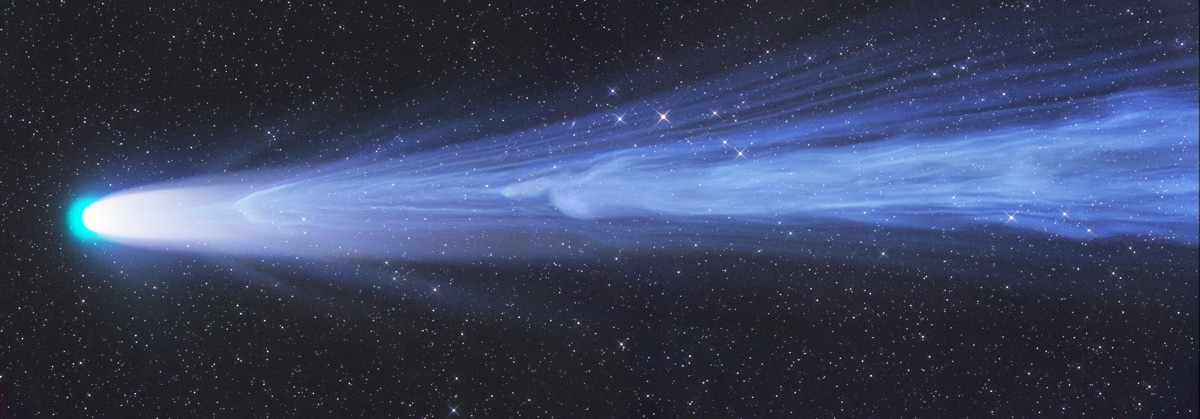
“Disconnection Event” by Gerald Rhemann. Overall winner and Planets, Comets, & Asteroids Winner
Location: Tivoli Southern Sky Guest Farm, Khomas, Namibia, 25 December 2021
“Comet Leonard was discovered by G.J. Leonard on 3 January 2021. It made its closest pass on 12 December 2021 and, having left the Solar System, won’t be seen from Earth again. On 25 December 2021, a dramatic tail disconnection event happened. A piece of Comet Leonard’s tail was pinched off and carried away by the solar wind.”
A rare photo of Comet Leonard’s gas tail being swept away by solar wind took home the top prize at the 14th annual Astronomy Photographer of the Year competition. Taken in Namibia on Christmas Day, the once-in-a-lifetime image earned photographer Gerald Rhemann a unanimous victory.
“Astronomy, myth, and art come together beautifully in this shot,” shared judge Imad Ahmed, director of the New Crescent Society. “It holds great value to scientists, as it elegantly captures a disconnection event. Yet this photograph, which was taken on Christmas Day, seems to tell an otherworldly story too–it could be the Star of Bethlehem, an angel or a fairy soaring through the night sky.”
Winning the contest is a major achievement for Rhemann and a confirmation that all of his hard work in astrophotography has paid off. The Austrian photographer was just one of many creatives honored by the awards, which are organized by the Royal Observatory Greenwich. Across categories like Our Sun, Aurorae, and Skyscapes, these talented astrophotographers allow us to gain new insight into the stars.
Familiar names like Andrew McCarthy, known for his backyard astrophotography, are among the winners. McCarthy won the People and Space category for his fascinating image of the International Space Station transiting the Apollo 11 Moon-landing site.
“This is a wonderfully original take on this category and it reminds us that we live in a time when humans have a permanent presence in space,” commented Melissa Brobby, judge and social media officer for the Institute of Physics.
The contest also highlights young photographers, and this year’s winners proves that youth can certainly compete with experience. Fourteen-year-olds Yang Hanwen and Zhou Zezhen were named the Young Astronomy Photographers of the Year for their incredible image of the Andromeda Galaxy.
“It is a superb capture by young astrophotographers, who also demonstrate their exceptional talent in processing a deep-sky photo,” shared László Francsics, judge and chairman of the Hungarian Astrophotographers’ Association.
The winners were selected from over 3,000 images that were submitted to this year’s contest. The judges first narrowed the field to 36 finalists before the winners were announced.
Check out the stunning winning images from the 2022 Astronomy Photographer of the Year contest.
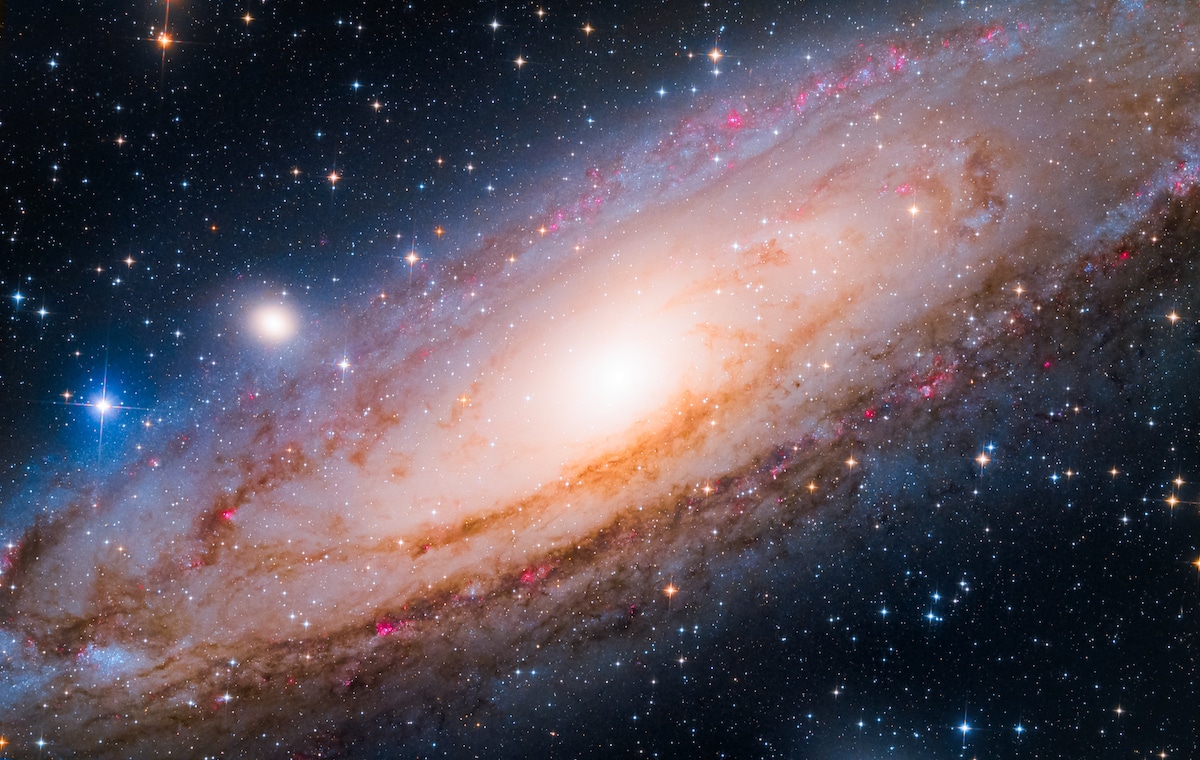
“Andromeda Galaxy, The Neighbour” by Yang Hanwen, Zhou Zezhen. Winner, Young Astronomy Photographer of the Year.
Location: Heishicheng, Kangding, Sichuan, China, 21 February 2021
“The Andromeda Galaxy, or Messier 31 (M31), is one of the closest and largest neighbors of the Milky Way. M31 is also the most distant object the human eye can see. When you look at it with the naked eye it’s like a fog, but through the telescope it shows its magnificence. Yang Hanwen provided the original picture of M31.”
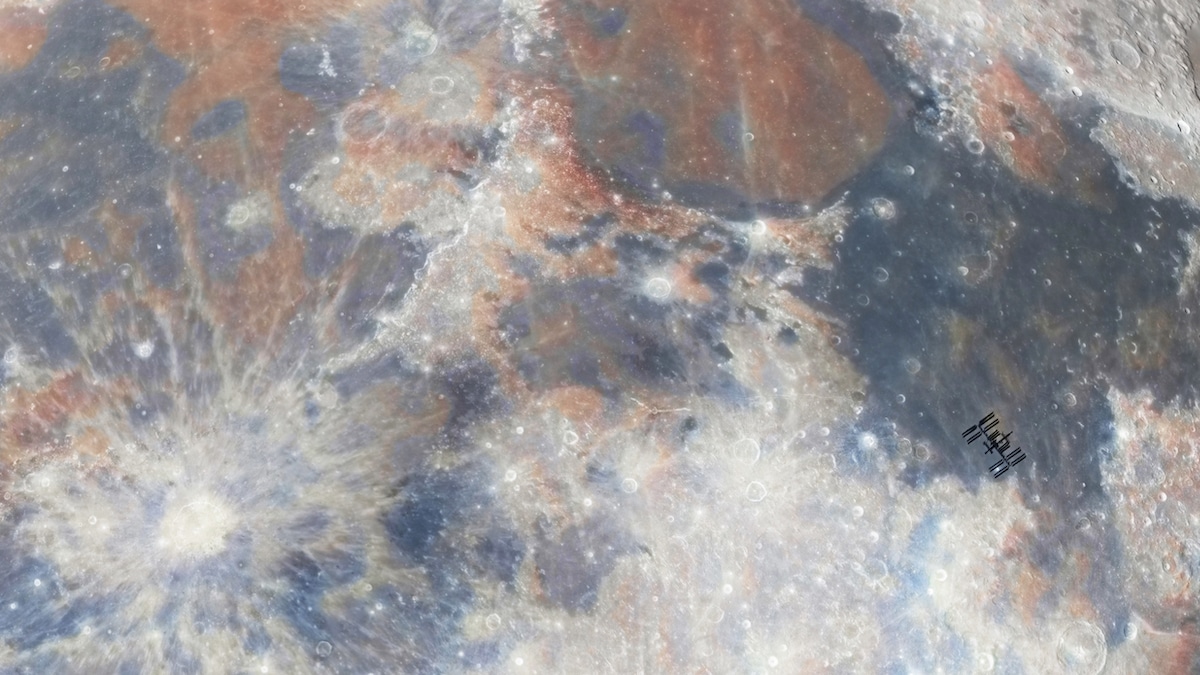
“The International Space Station Transiting Tranquility Base” by Andrew McCarthy. Winner, People and Space
Location: Florence, Arizona, USA, 19 January 2022
“This image features the International Space Station (ISS) positioned directly over the Apollo 11 Moon-landing site on the Sea of Tranquility. The moment only lasted a handful of milliseconds and required precise positioning to capture the pass at the perfect time.”
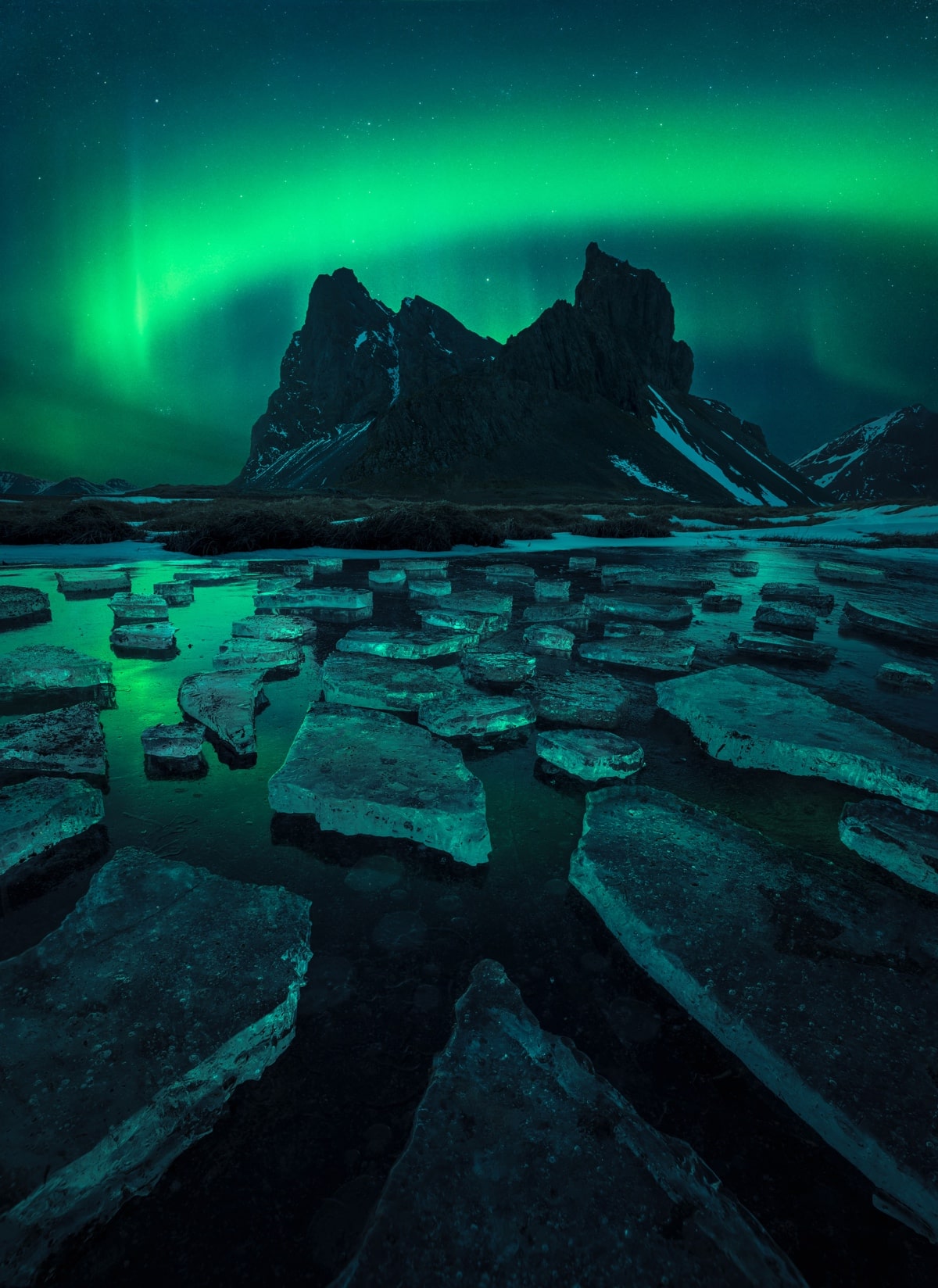
“In the Embrace of a Green Lady” by Filip Hrebenda. Winner, Aurorae.
Location: Hvalnes, Iceland, 10 April 2021
“The Northern Lights are one of the most interesting natural phenomena. Although they are usually shot in the winter months, this photograph was taken during the late spring. It shows the dancing Aurora Borealis, reflected in a little frozen lake above the Eystrahorn mountain.”
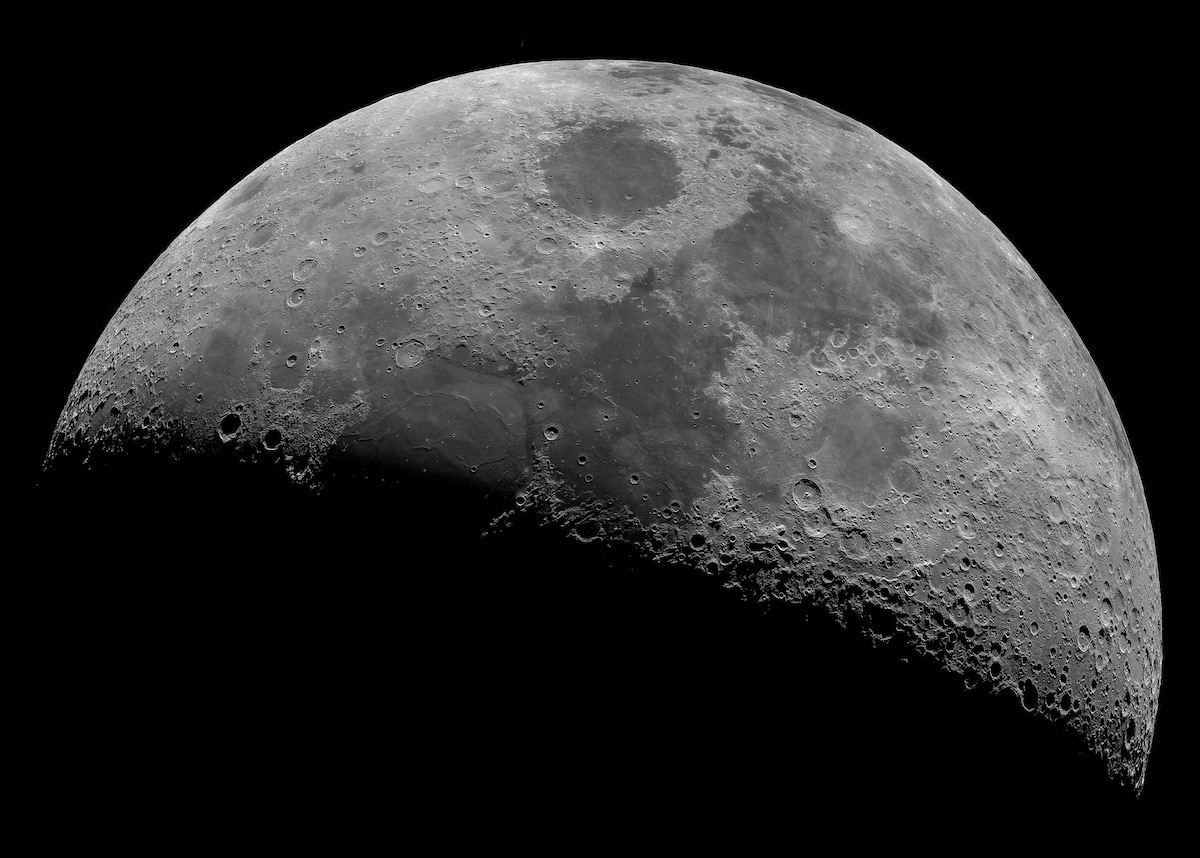
“Moon: Big Mosaic” by Andrea Vanoni. Runner Up, Our Moon.
Location: Porto Mantovano, Lombardy, Italy, 19 January 2021
“This is a 32-panel mosaic of the crescent Moon. In this image you can see the most famous craters, rims, mountains, domes and seas of this lunar phase.”
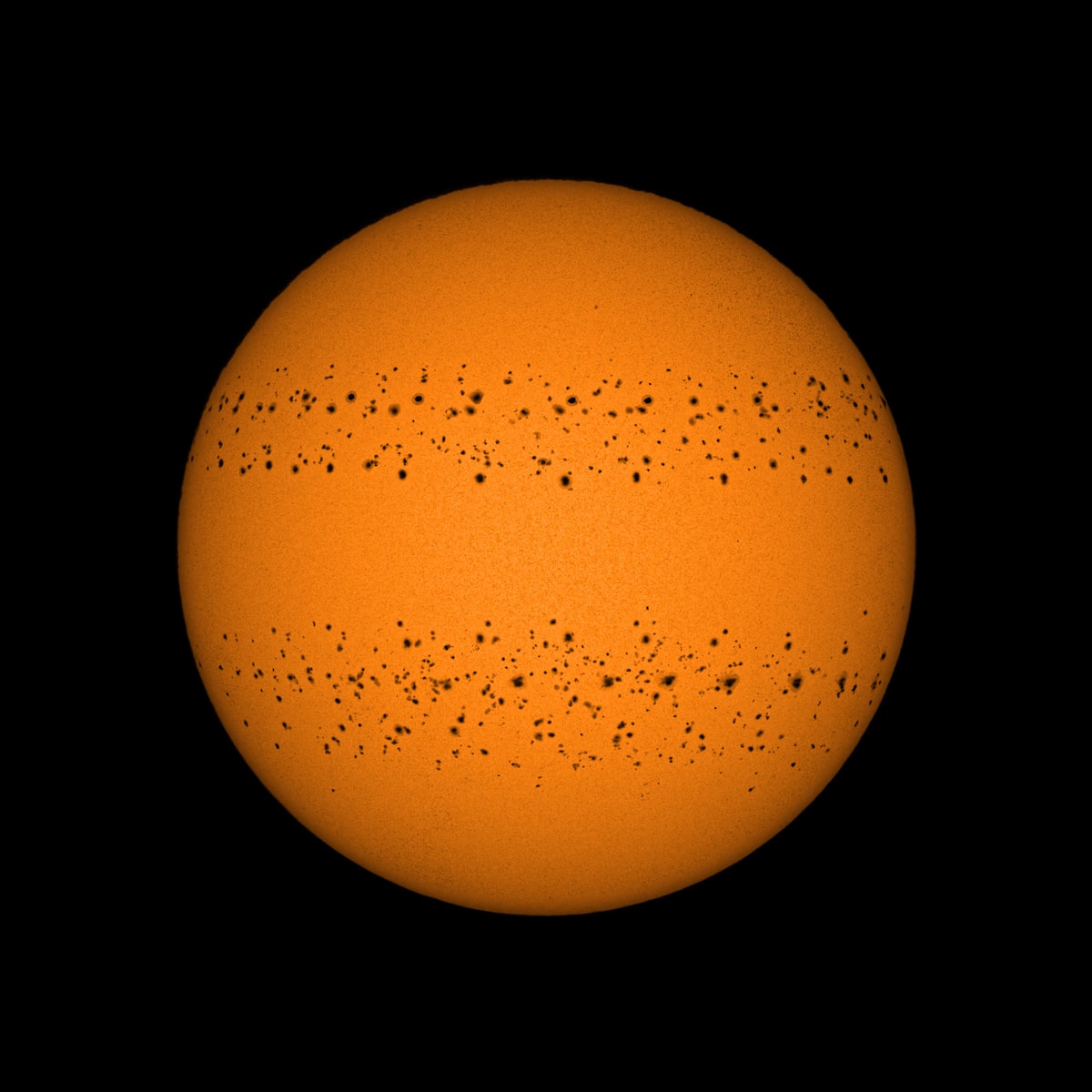
“A Year in the Sun” by Soumyadeep Mukherjee. Winner, Our Sun.
Location: Kolkata, West Bengal, India, 31 December 2021
“Mukherjee imaged the Sun for 365 days between 25 December 2020 and 31 December 2021 (missing just 6 days during this period). After a year, he blended the images to create a single shot The sunspots create two bands on the solar disc, around 15–35 degrees north and south of the equator and gradually start drifting towards it (a phenomenon known as Spörer’s law).”
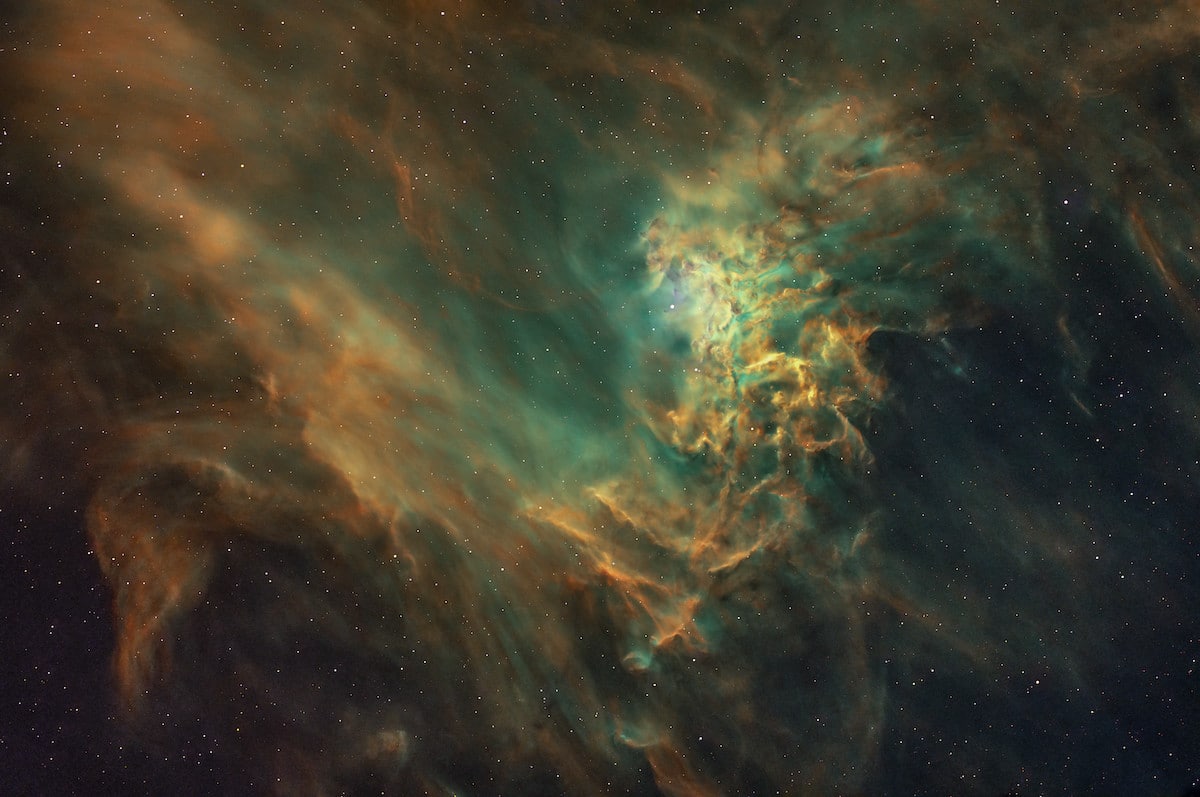
“What a Flaming Star!” by Martin Cohen. Runner Up, Nebulae.
Location: Fareham, Hampshire, UK, 22 February 2022
“The Flaming Star Nebula (IC 405, SH 2-229 or Caldwell 31) is an emission and reflection nebula in the constellation Auriga. It lies about 1,500 light years from Earth and is about 5 light years across.”
An overall winner, youth winner, two special prized, and eight category winners were announced.
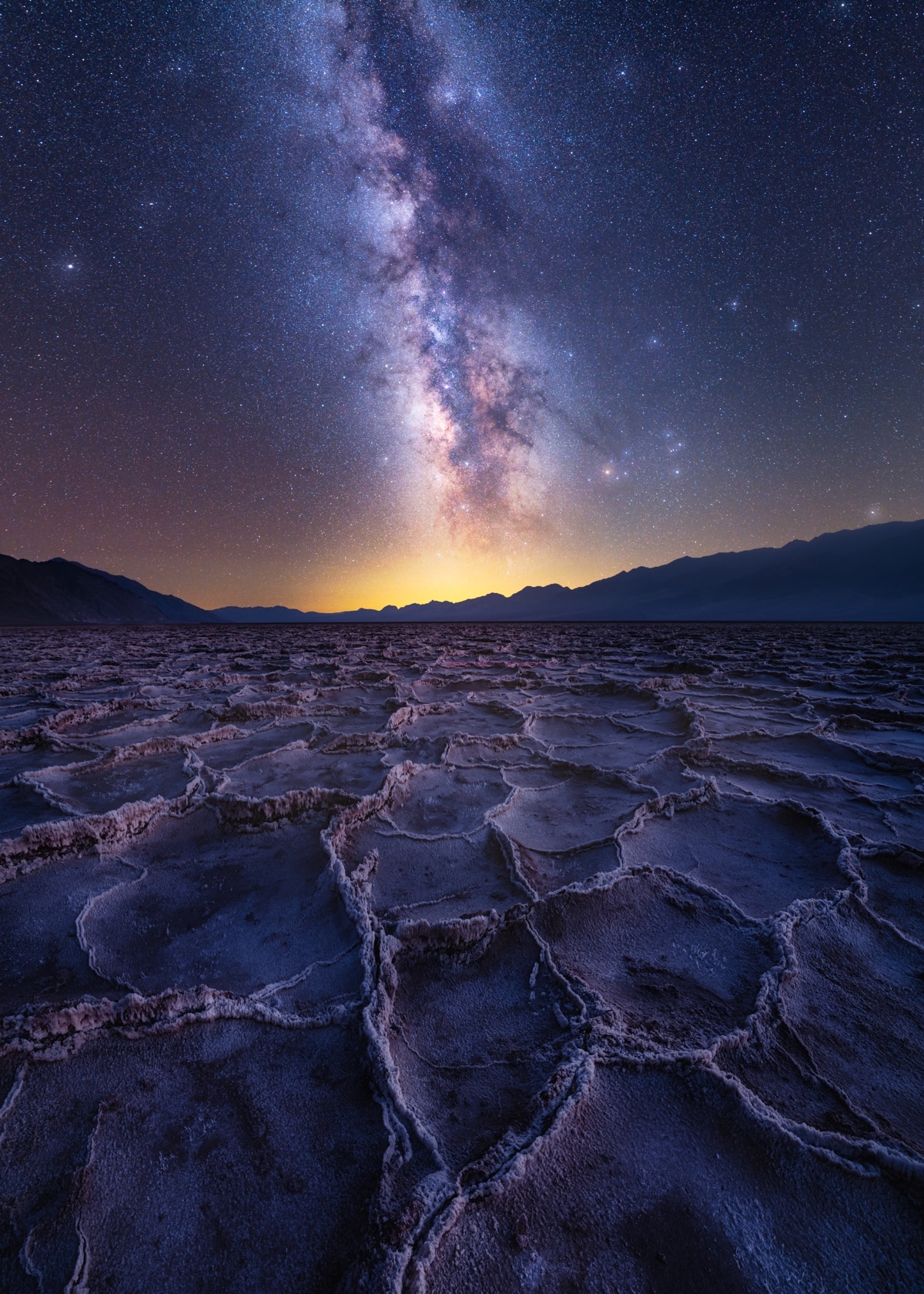
“Badwater Milky Way” by Abhijit Patil. Runner Up, Skyscapes.
Location: Death Valley, California, USA, 2 September 2021
“Some of the most exquisite locations in Death Valley National Park are the salt flats at Badwater Basin. Located 86 meters below sea level, the basin is the lowest point in North America. Every winter brings new rainwater to the flats and the continuous freeze-thaw-evaporate process creates these hexagonal patterns in the mud.”
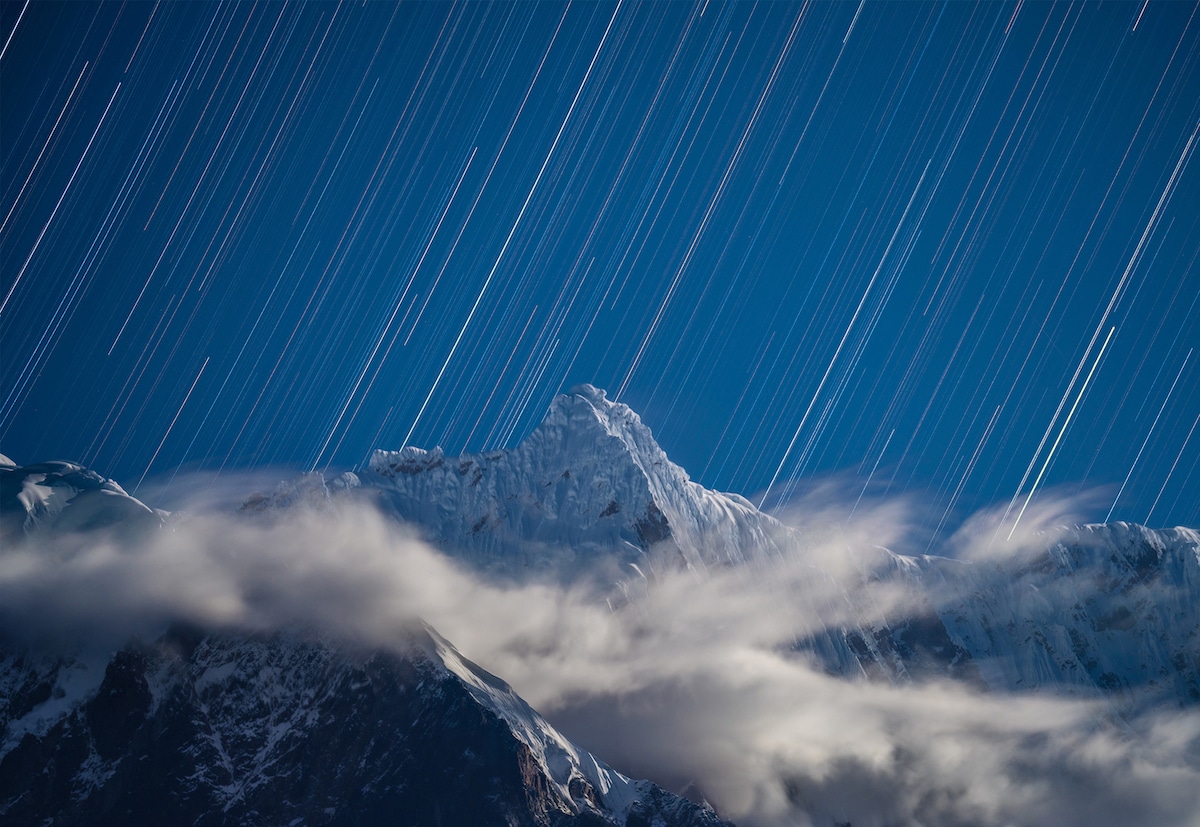
“Stabbing Into the Stars” by Zihui Hu. Winner, Skyscapes.
Location: Nyingchi, Tibet, China, 24 December 2021
“Namcha Barwa is the most beautiful snow-capped mountain in China. The name of the mountain in Tibetan means ‘spear thrusting into the sky’. This untouched land is also home to the purest of starry skies, the trails of which weave a wide net even on Full Moon days. Namcha Barwa, like a spear, pierces this net.”
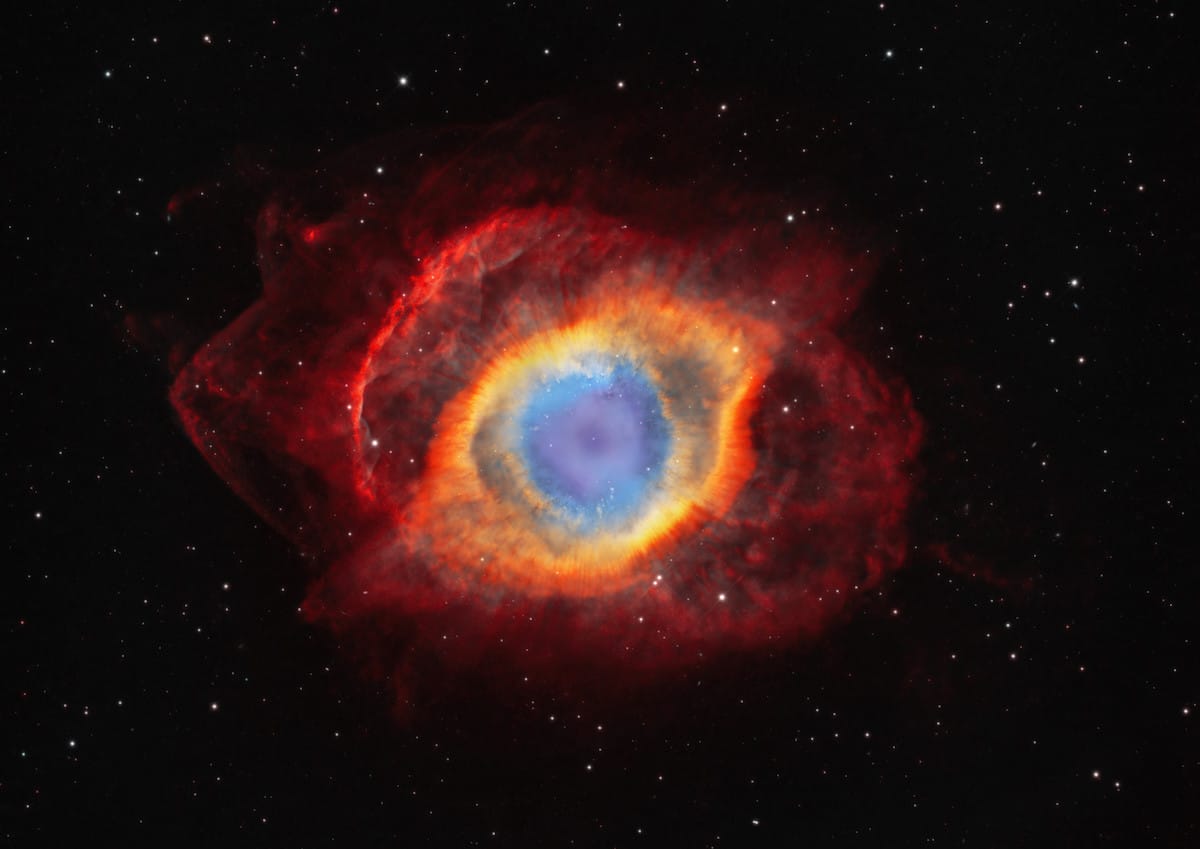
“The Eye of God” by Weitang Liang. Winner, Nebulae.
Location: Chilescope, Río Hurtado, Coquimbo Region, Chile, 8 August 2021
“This ultra-deep exposure of the ‘Eye of God’, also known as the Helix Nebula or NGC 7293, reveals the glorious colors of the core and rarely seen surrounding details. The core appears in purple and cyan, creating an ethereal and dreamy feeling. The stunning orange, red and yellow outer region shows the power of the cosmos – all the matter is moving, colliding and tumbling.”
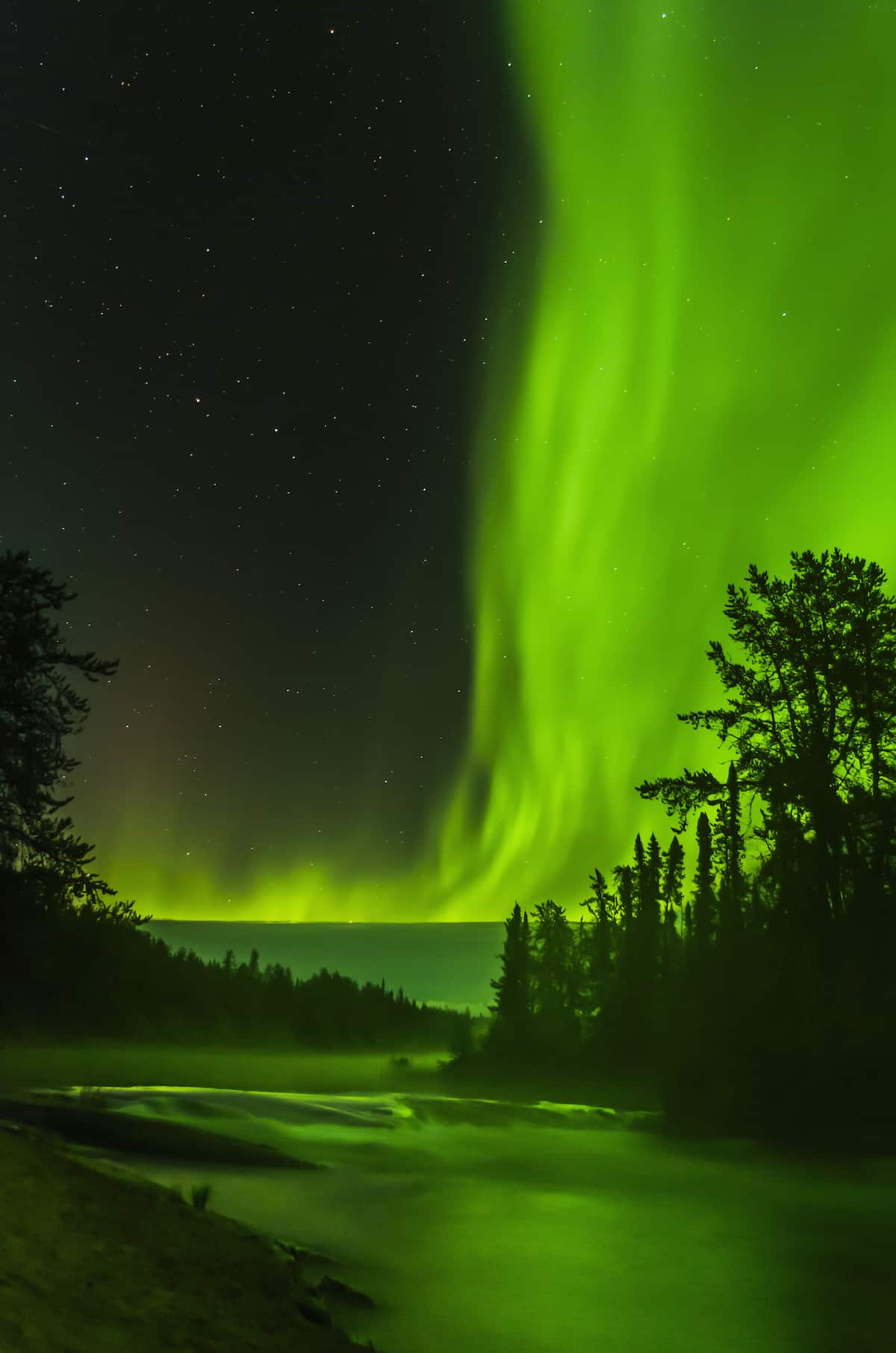
“Misty Green River” by Fred Bailey. Runner Up, Aurorae.
Location: Near Yellowknife, Northwest Territories, Canada, 1 September 2021
“This photo, captured over Cameron River in Canada’s Northwest Territories, shows the differentiation between the aurora and the dark sky.”
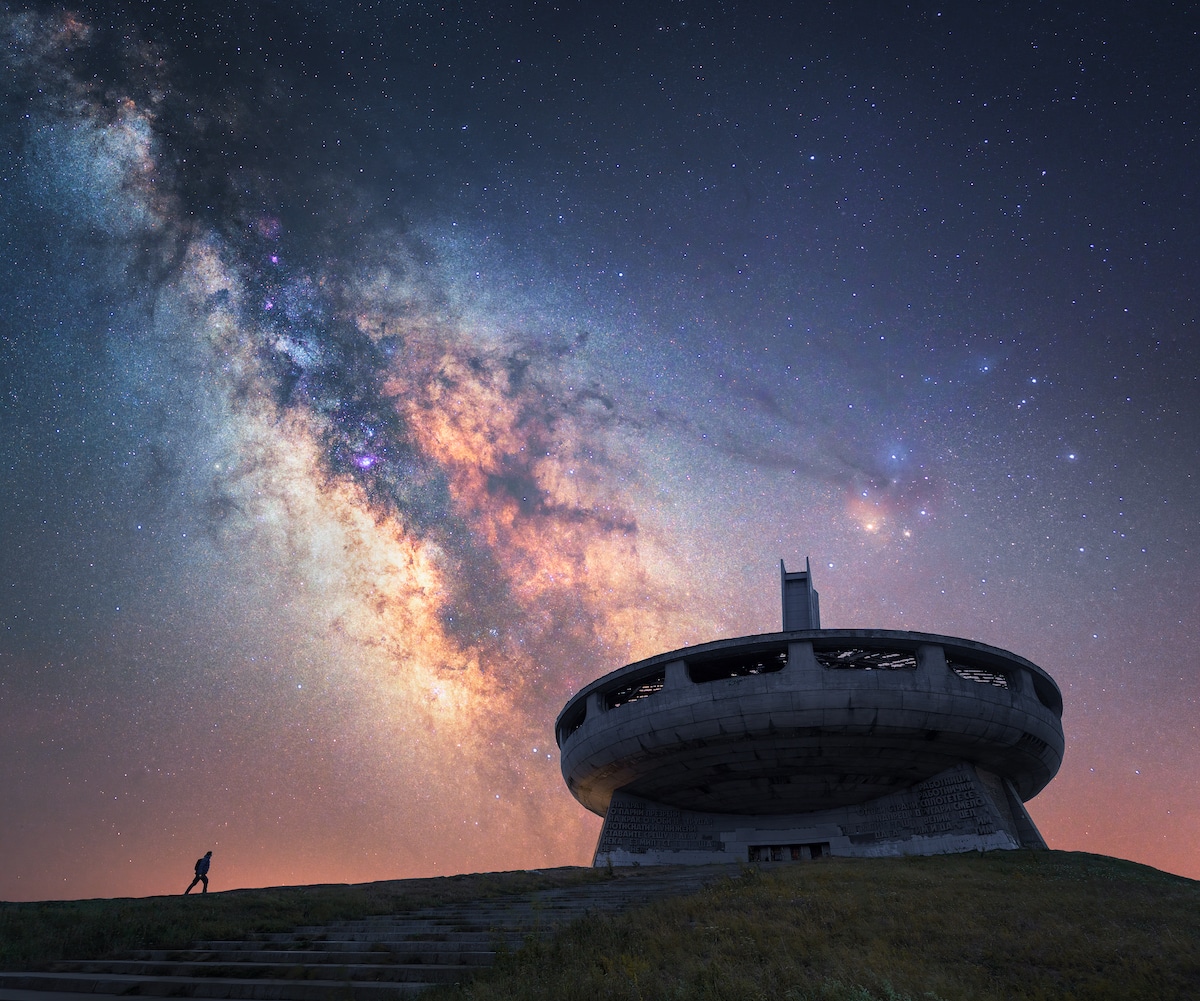
“Back to the Spaceship” by Mihail Minkov. Runner Up, People & Space.
Location: Buzludzha, Balkan Mountains, Stara Zagora Province, Bulgaria, 12 August 2021
“Built between 1974 and 1981, this spaceship-like structure was designed by Georgi Stoilov and involved the removal of more than 15,000 cubic meters of rock from the peak of Buzludzha, reducing the mountain’s height by 9 meters. Although the building is now closed to the public, its space-age silhouette is the perfect complement for dramatic images of the night sky.”
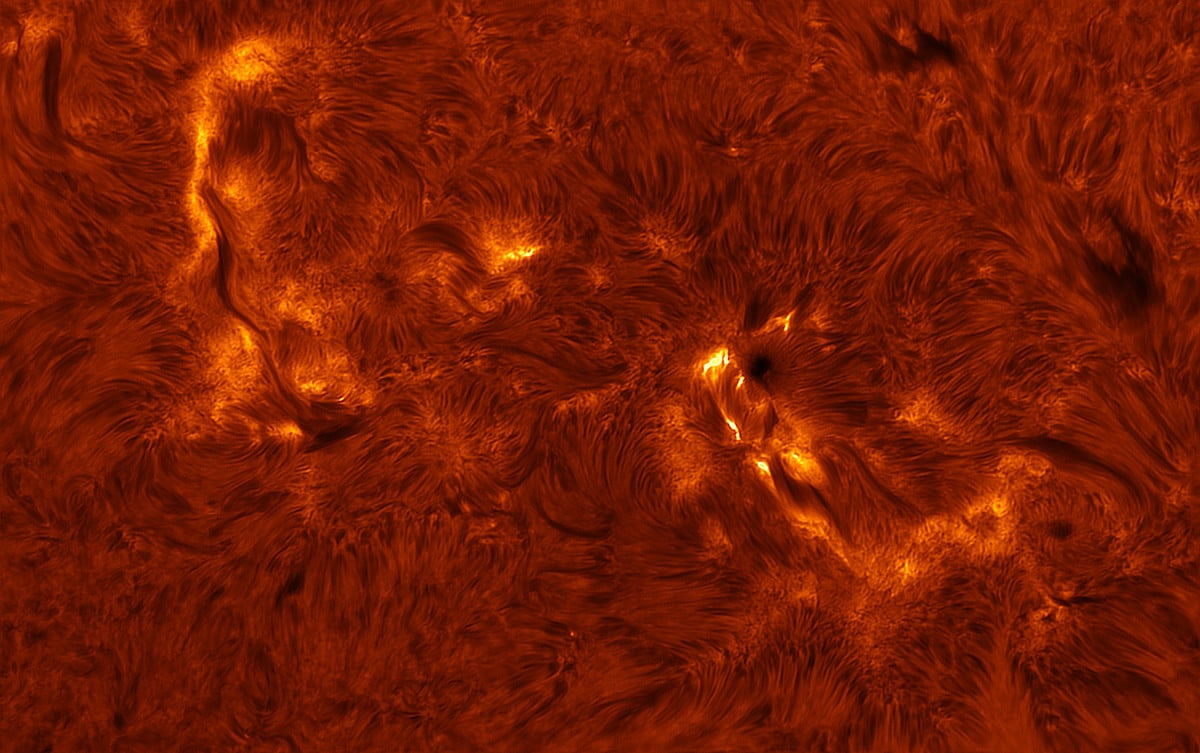
“Solar Inferno” by Stuart Green. Runner Up, Our Sun.
Location: Preston, Lancashire, UK, 19 December 2021
“The Sun looks different every time astrophotographers capture an image as new sunspots form, grow and eventually fade away. The photographer selectively filtered out all wavelengths of light except a narrow red band (known as the H-alphaline) to reveal an active region of change of the Sun.”
The winning photographs will be exhibited in the National Maritime Museum.
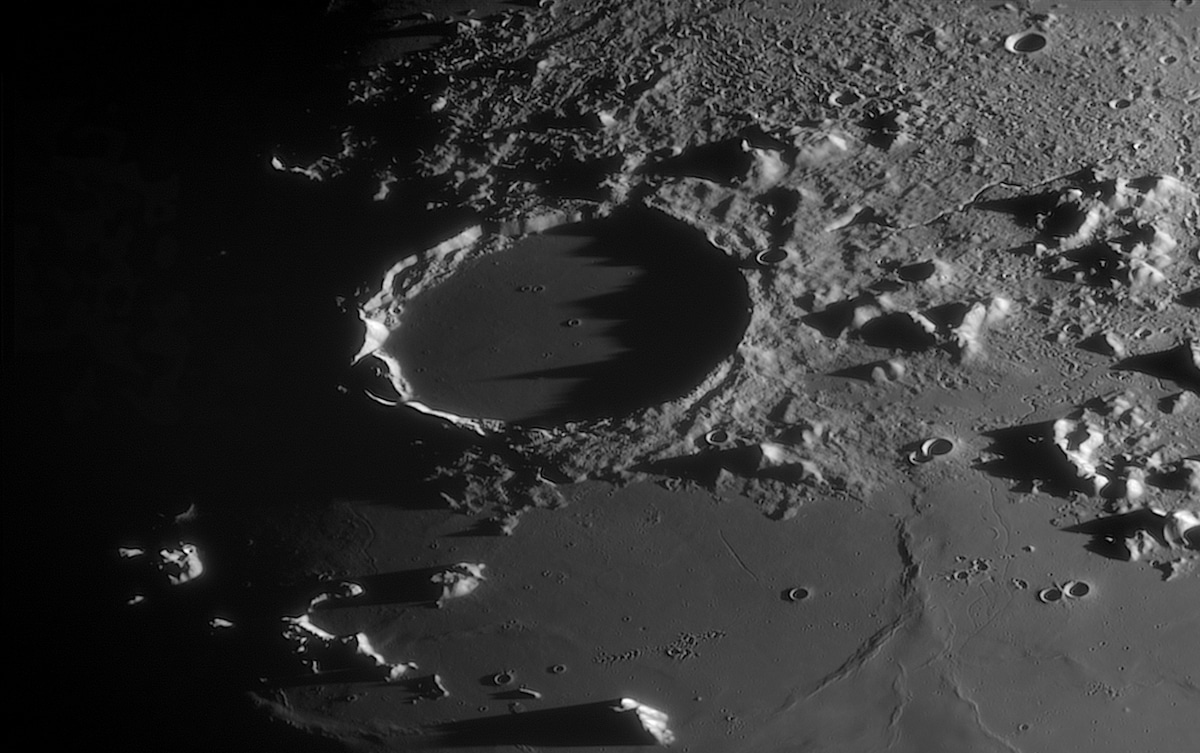
“Shadow Profile of Plato’s East Rim” by Martin Lewis. Winner, Our Moon.
Location: St Albans, Hertfordshire, UK, 20 April 2021
“Once a month the Sun rises over the giant lunar crater Plato and casts huge shadows from its east rim across its lava-filled floor. Occasionally this event coincides with a night of good seeing. The night of 20 April 2021 was one such rare night – with steady skies and the Moon high overhead, the dark, projected rim-profile was visible in exquisite detail.”
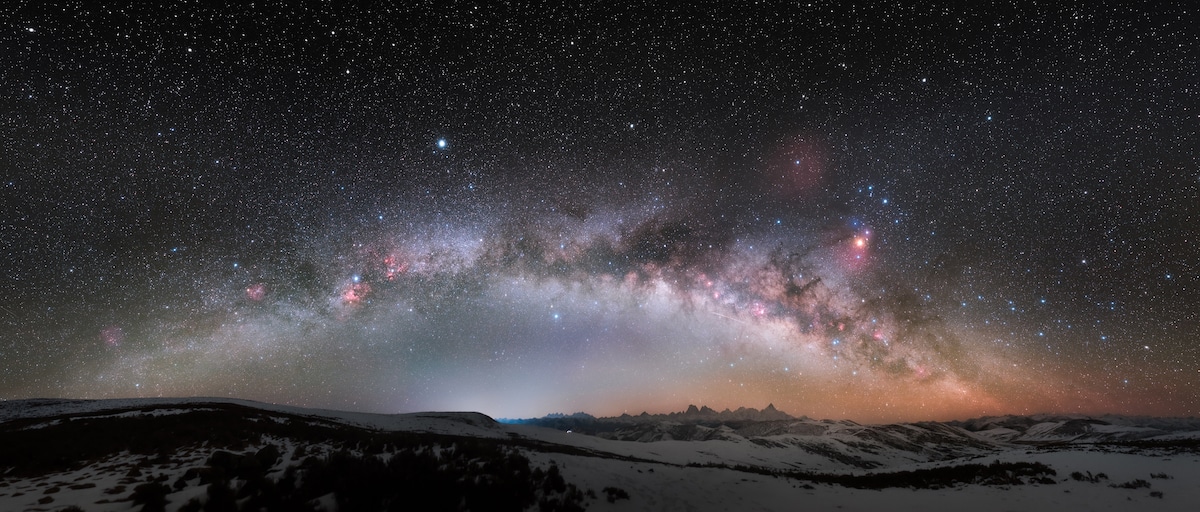
“The Milky Way bridge across big snowy mountains” by Lun Deng. Winner, Sir Patrick Moore Prize for Best Newcomer
“The Milky Way rises above the Minya Konka Mountain, the highest peak in Sichuan China, in the early hours of the morning on 21 February 2021.”
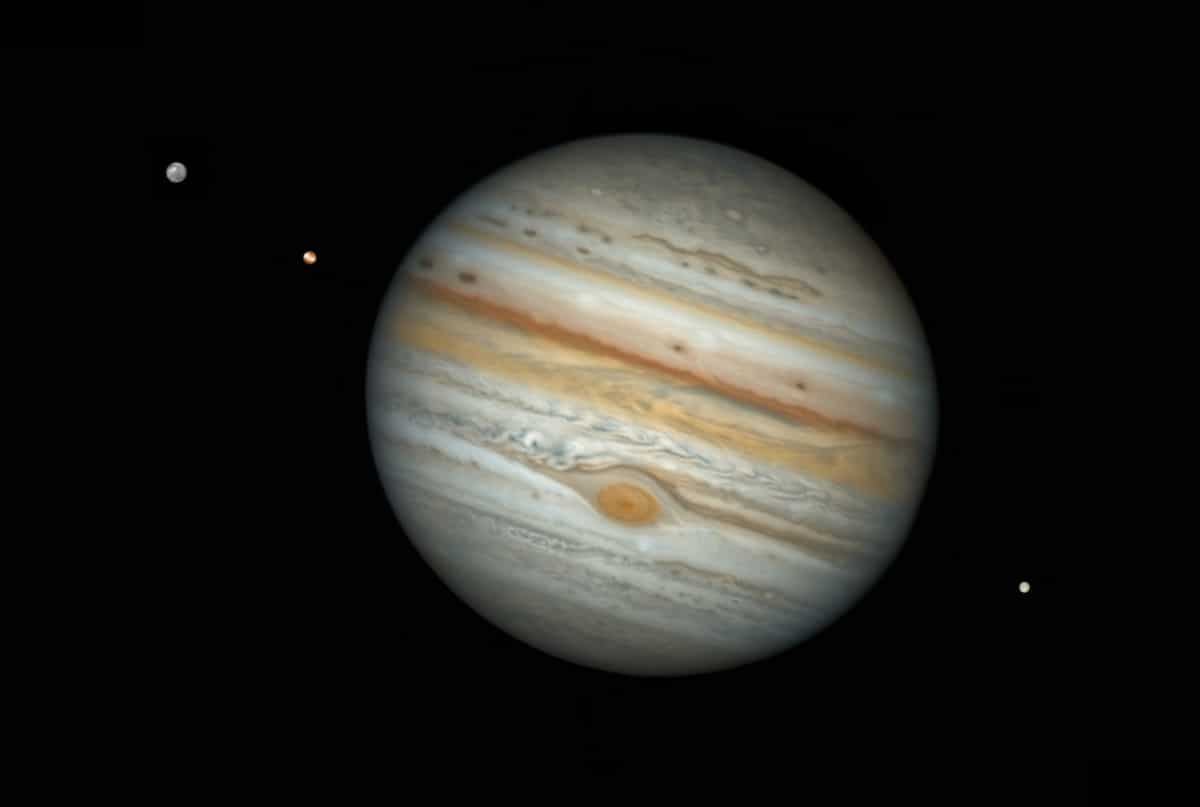
“The Jovian Family” by Damian Peach. Runner Up, Planets, Comets, & Asteroids.
Location: El Sauce Observatory, Río Hurtado, Coquimbo, Chile, 5 August 2021
“Here, Jupiter can be seen alongside three of the planet’s largest moons. The famous Great Red Spot is clearly visible on Jupiter itself, along with many other spots and storms. Similar details are also evident on all three of the Jovian moons. The bright ray crater Osiris can be seen on the moon Ganymede at the upper left.”
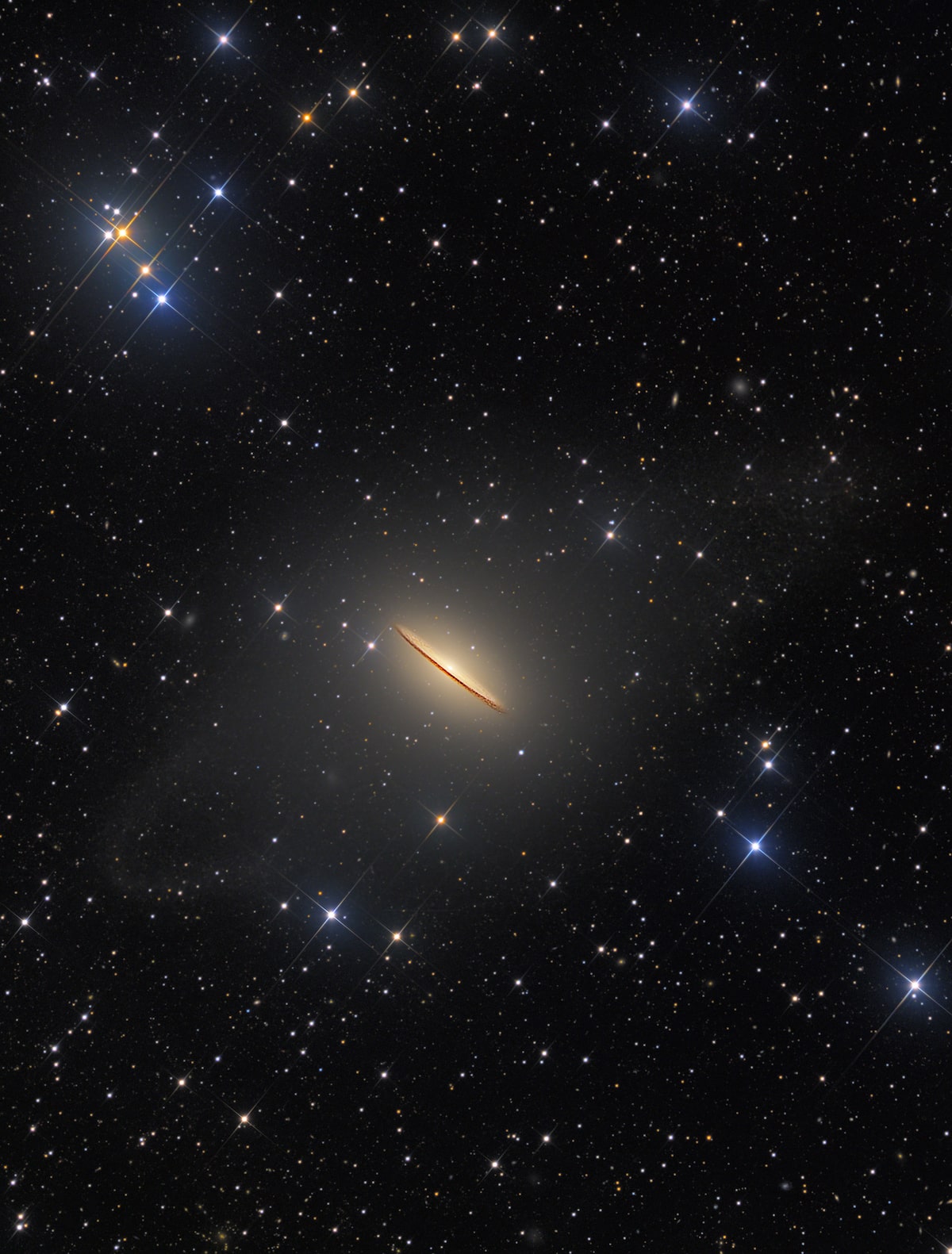
“Majestic Sombrero Galaxy” by Utkarsh Mishra, Michael Petrasko, Muir Evenden. Winner, Galaxies.
Location: Pie Town, New Mexico, USA, 5 May 2021
“This image shows the faint star streams that were created when a smaller galaxy collided with, and its remnants then began to orbit, the Milky Way. Three versions of the photograph were made: a muted version for the background, a regular version for the disc and a super-stretched starless version for the stellar streams and halo. They were then combined into a single image.”
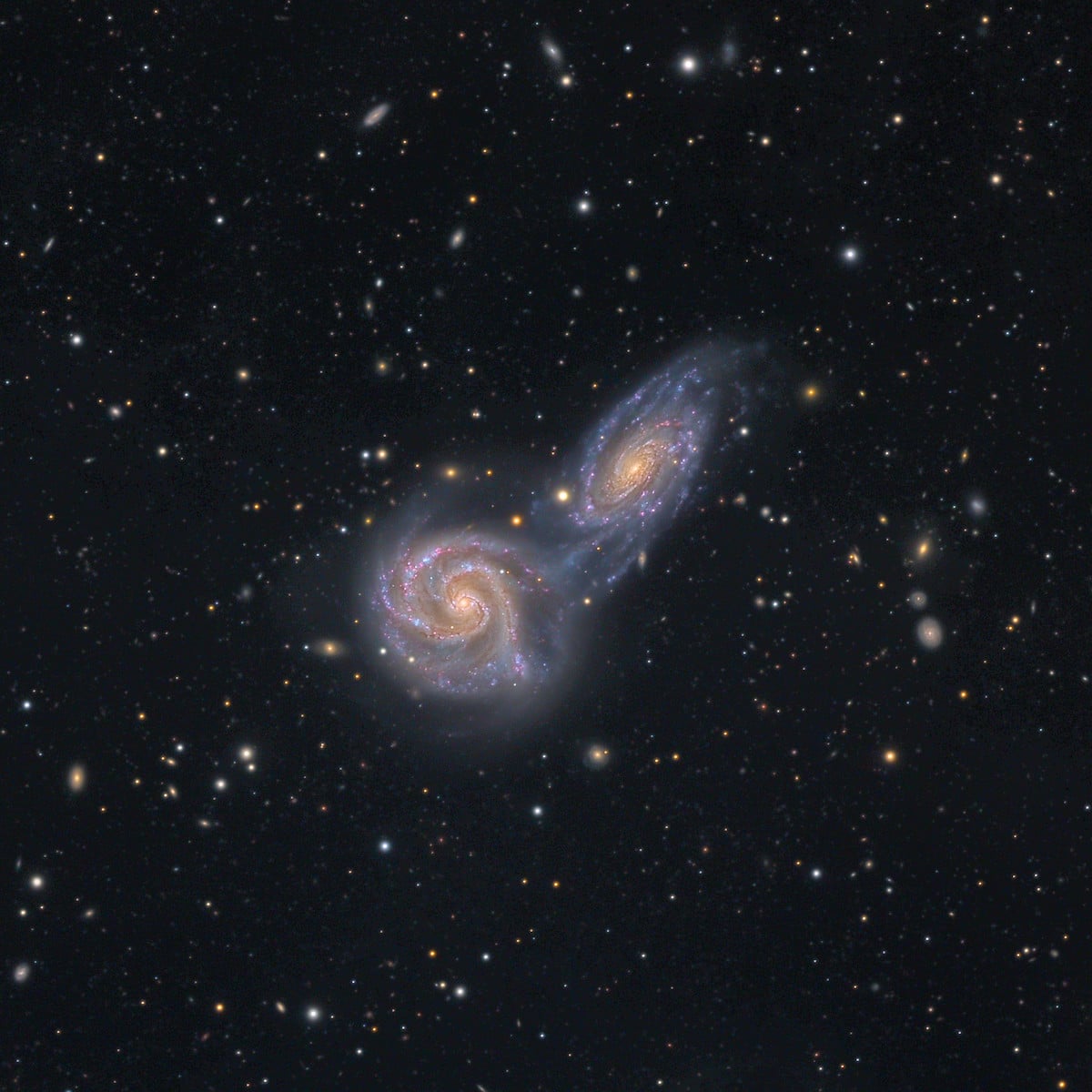
“Arp 271 “Cosmic Collision”” by Mark Hanson, Mike Selby. Runner Up, Galaxies.
Location: El Sauce Observatory, Río Hurtado, Coquimbo Region, Chile, 3 June 2021–1 January 2022
“NGC 5426 and NGC 5427 are two spiral galaxies of similar size engaged in a major interaction. Known collectively as Arp 271, the interaction is expected to continue for tens of millions of years.”
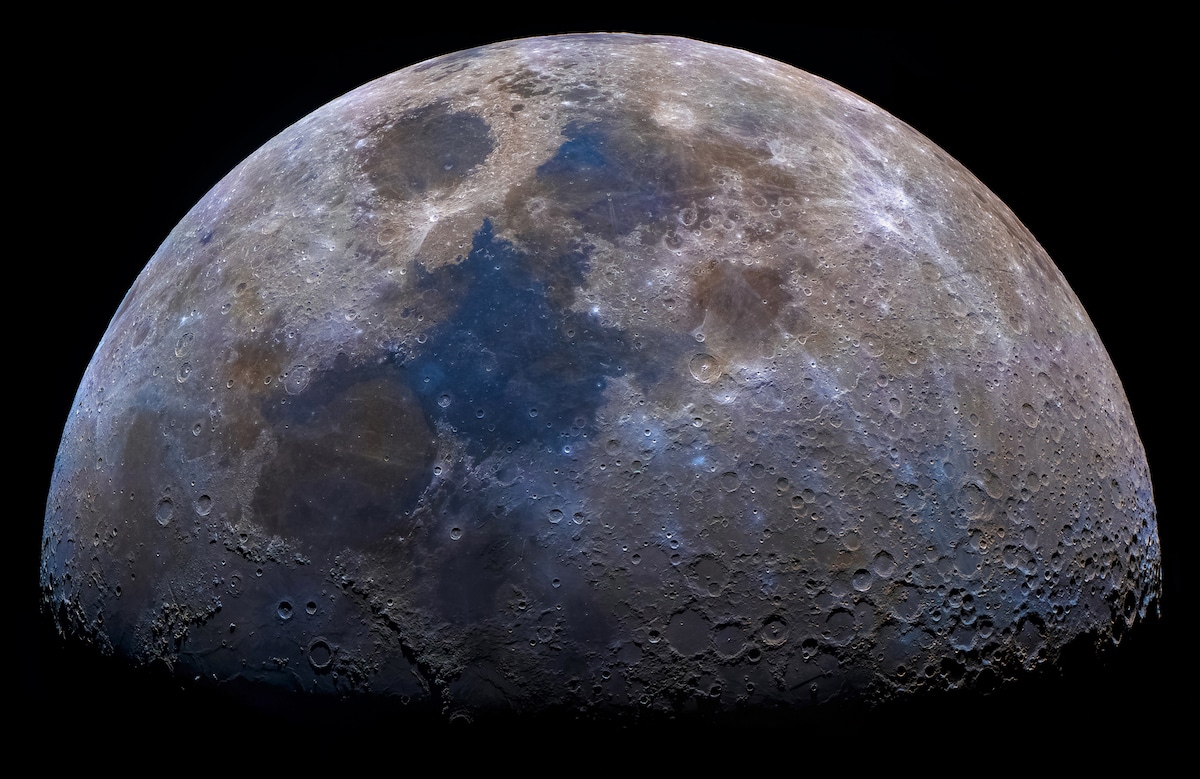
“Mineral Moon Moasic” by Peter Szabo. Highly Commended, Young Astronomy Photographer of the Year.
Location: Debrecen, Hungary, 9 February 2022
“This image is a high-resolution lunar mosaic, consisting of 34 panels.”
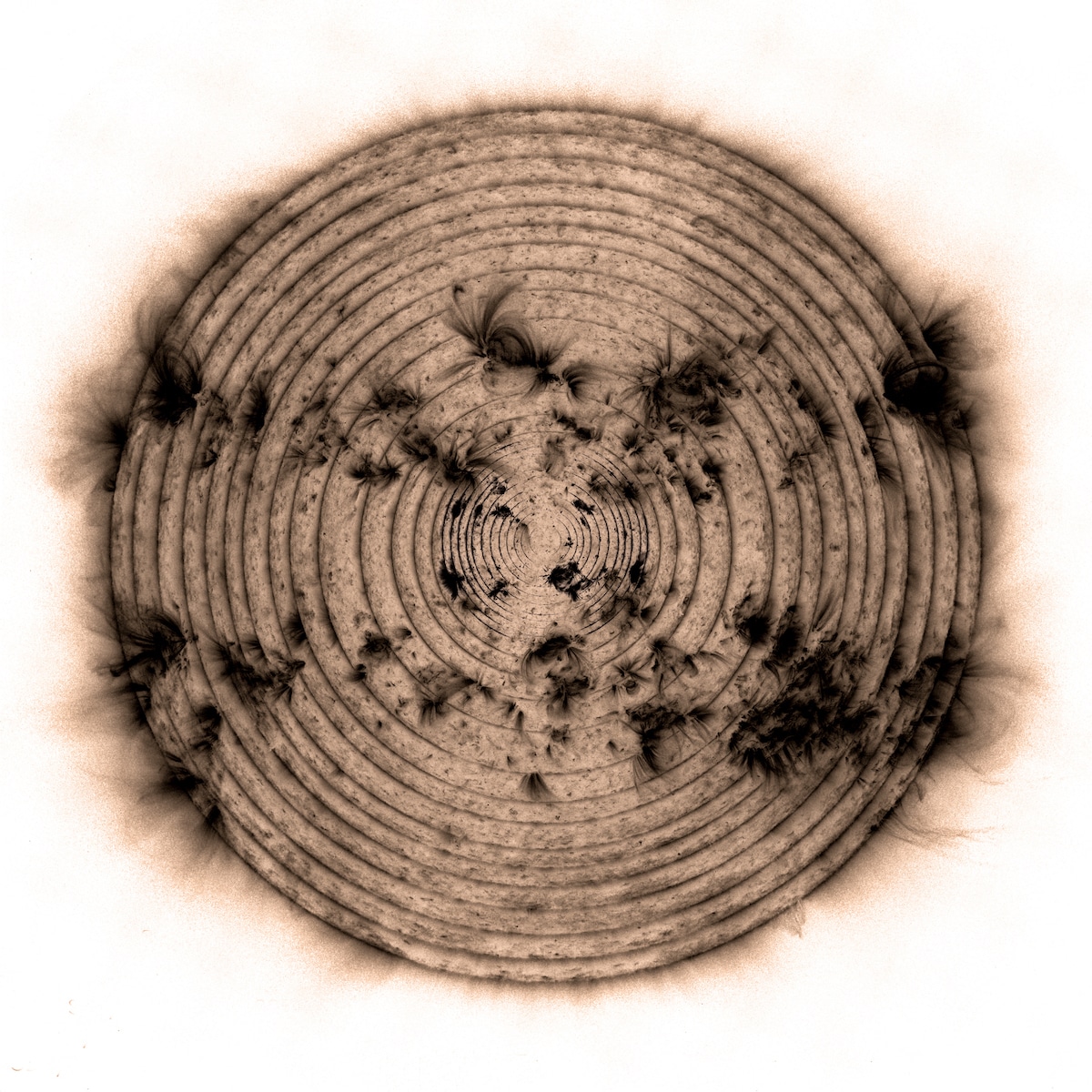
“Solar Tree” by Pauline Woolley, using open source data from Solar Dynamic Observatory. Winner, The Annie Maunder Prize for Digital Innovation.
“The making of this work derived from my research into carbon-14 traces found in some studies of tree-ring dating or dendrochronology. Twenty-six images of the Sun from the first part of Solar Cycle 25 have been layered to create concentric rings. The oldest ring lies in the centre while the most recent sits furthest away. Month by month, the rings expand or ‘grow’ to form the rings of an imaginary solar tree. The overall image is a marking of the passing of time, which incorporates visual evidence of increasing levels of solar activity apparent in the dark markings of solar flares.”
